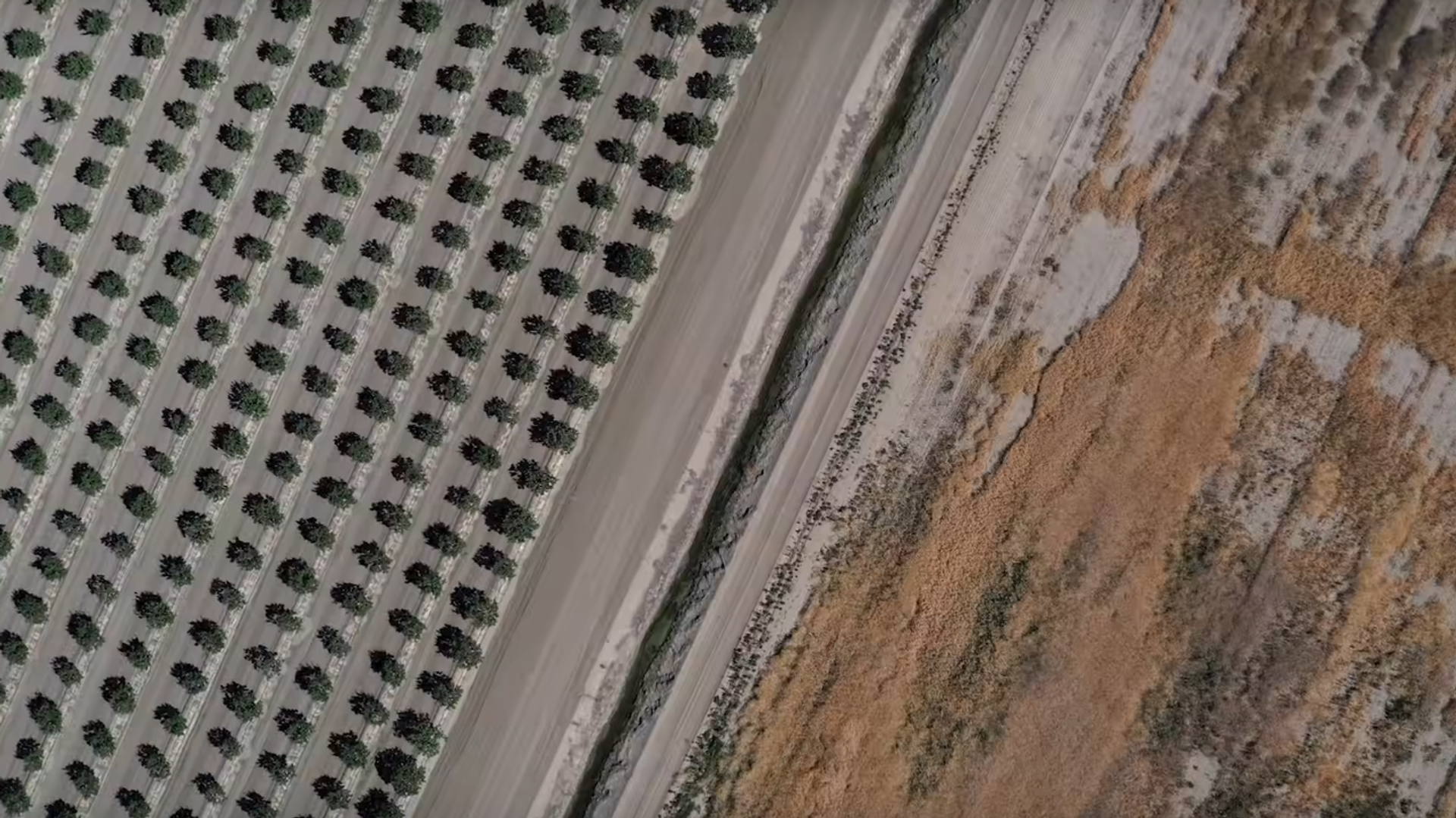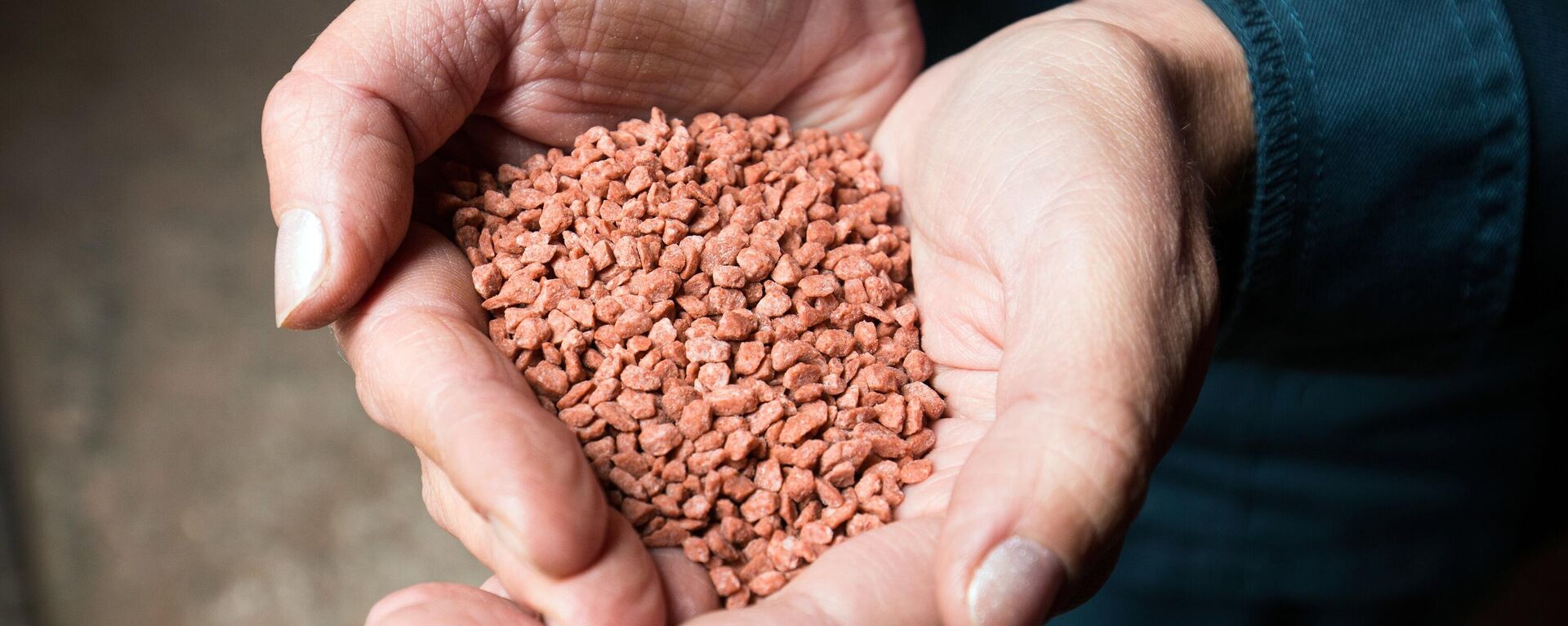https://sputnikglobe.com/20220823/extreme-drought-floods-wreak-havoc-on-us-farmland-tripling-unplanted-acreage-government-report-1099892082.html
Extreme Drought, Floods Wreak Havoc on US Farmland, Tripling Unplanted Acreage: Government Report
Extreme Drought, Floods Wreak Havoc on US Farmland, Tripling Unplanted Acreage: Government Report
Sputnik International
The bad news comes as a perfect storm of other factors negatively affects food availability and costs, including surging crop and fertilizer prices, new... 23.08.2022, Sputnik International
2022-08-23T10:19+0000
2022-08-23T10:19+0000
2023-02-14T14:11+0000
world
us
food security
agriculture
floods
drought
https://cdn1.img.sputnikglobe.com/img/07e6/08/17/1099891898_0:33:1268:746_1920x0_80_0_0_0832880edc531866831a14841ab9950f.png
US farmland acreage that remains unplanted due to extreme weather events such as severe drought and flooding has tripled over the past year, rising from 2.1 million acres in 2021 to 6.38 million acres in 2022, new figures put out by the Department of Agriculture’s Farm Service Agency has revealed.North Dakota, a major producer of soybeans, corn and wheat, has been hit the hardest, with a whopping 2.37 million acres of land left unplanted this year. South Dakota was also heavily affected, with more than 733,000 acres left unsown.Arkansas, Minnesota, and California have also suffered, losing 585,000, 496,000, and 369,500 acres, respectively.The affected acreage is still just a sliver of the 248,861,305 acres of total planted farmland in the United States, with the fallow fields accounting for about 2.5 percent of the total. However, the states most heavily affected by flooding and drought have suffered more significant losses to their total output, including nearly 15 percent of North Dakota’s total planted farmlands, five percent of those of South Dakota, and 10 percent of those of Arkansas.Dr. Wendong Zhang, an assistant professor of applied economics at Cornell University, told Sputnik that the weather challenges are expected to reduce corn and soybean yields significantly, but that American farmers have made it through similar challenges before."The prevented planting acre in 2019 was almost 20 million acres, so this is bad but US farmers have seen worse. A smaller US crop, coupled with elevated demand due to the challenges in moving grains out of Ukraine, certainly could push prices higher. US farmers are dealing with higher fertilizer costs and financing costs due to higher interest rates and higher land rent, but most farms are still profitable," the professor assured.The troubling 2022 planting figures threaten to become yet another blow to global food security, with the United States being one of the world’s top food producing countries, and traditionally accounting for as much as 10 percent of global agricultural exports, including soybeans, corn, tree nuts, wheat, meat, and dairy.Developing countries and lower-income families in the US and Europe are already facing the consequences of an inflation crunch which has caused double digit spikes in food and fuel prices, with the crisis already causing the ouster of several European governments, and hitting countries in Africa and Latin America with cost of living protests that occasionally turn violent.The calamity is at least in part the result of recent decisions made by US and European leaders, who responded to the escalation of the security crisis in Ukraine in February by slapping thousands of new sanctions on Russia and attempting to dramatically reduce imports of Russian oil, gas, and coal. The restrictions have also been accompanied by new sanctions against Russia’s efforts to export food, as well as energy-intensive fertilizers, prompting African Union chief Macky Sall to warn in June that the West’s measures against Moscow pose “a serious threat to food security” on his continent.These problems have further been exacerbated by some Western nations’ fanatical drive to introduce new "green" farming rules aimed at slashing nitrogen and ammonia emissions. In the Netherlands, the second-largest agricultural exporter in the world after the US, farmers have spent months protesting after the government threatened them with forced buyouts and farm closures if they refused to slash livestock herds.Billionaire investors’ and hedge funds’ splurging on farmland in recent years has become another threat to global food security, with soaring land prices and buyouts of smaller farmers by oligopolistic producers adding pennies to every dollar people spend on food. Last year, CNBC reported that tech billionaire Bill Gates, Amazon’s Jeff Bezos, Hungarian-born American billionaire Thomas Peterffy and others have engaged in a major farmland-buying spree, with Gates becoming the single largest private farmland owner in the US in 2020, his holdings amounting to over 269,000 acres. The Department of Agriculture estimates that as much as 30 percent of US farmland owned by investors is rented back to farmers, leaving the people who actually work the land in a vicious rent cycle.
https://sputnikglobe.com/20220723/orban-sanctions-made-no-change-in-moscows-course-europe-lost-four-governments-1097722283.html
https://sputnikglobe.com/20220603/anti-russia-sanctions-left-africa-without-access-to-grain-and-fertilizers-senegalese-president-says-1095966996.html
Sputnik International
feedback@sputniknews.com
+74956456601
MIA „Rossiya Segodnya“
2022
News
en_EN
Sputnik International
feedback@sputniknews.com
+74956456601
MIA „Rossiya Segodnya“
Sputnik International
feedback@sputniknews.com
+74956456601
MIA „Rossiya Segodnya“
us, food security, agriculture, floods, drought
us, food security, agriculture, floods, drought
Extreme Drought, Floods Wreak Havoc on US Farmland, Tripling Unplanted Acreage: Government Report
10:19 GMT 23.08.2022 (Updated: 14:11 GMT 14.02.2023) The bad news comes as a perfect storm of other factors negatively affects food availability and costs, including surging crop and fertilizer prices, new “green” farming rules in some countries leading to a downturn in crop yields, and the buying up of millions of acres of farmland by billionaire investors and hedge funds.
US farmland acreage that remains unplanted due to extreme weather events such as severe drought and flooding has tripled over the past year, rising from 2.1 million acres in 2021 to 6.38 million acres in 2022,
new figures put out by the Department of Agriculture’s Farm Service Agency has revealed.
North Dakota, a major producer of soybeans, corn and wheat, has been hit the hardest, with a whopping 2.37 million acres of land left unplanted this year. South Dakota was also heavily affected, with more than 733,000 acres left unsown.
Arkansas, Minnesota, and California have also suffered, losing 585,000, 496,000, and 369,500 acres, respectively.
The affected acreage is still just a sliver of the 248,861,305 acres of total planted farmland in the United States, with the fallow fields accounting for about 2.5 percent of the total. However, the states most heavily affected by flooding and drought have suffered more significant losses to their total output, including nearly 15 percent of North Dakota’s total planted farmlands, five percent of those of South Dakota, and 10 percent of those of Arkansas.
Dr. Wendong Zhang, an assistant professor of applied economics at Cornell University, told Sputnik that the weather challenges are expected to reduce corn and soybean yields significantly, but that American farmers have made it through similar challenges before.
"The prevented planting acre in 2019 was almost 20 million acres, so this is bad but US farmers have seen worse. A smaller US crop, coupled with elevated demand due to the challenges in moving grains out of Ukraine, certainly could push prices higher. US farmers are dealing with higher fertilizer costs and financing costs due to higher interest rates and higher land rent, but most farms are still profitable," the professor assured.
The troubling 2022 planting figures threaten to become yet another blow to global food security, with the United States being one of the world’s top food producing countries, and traditionally accounting for as much as 10 percent of global agricultural exports, including soybeans, corn, tree nuts, wheat, meat, and dairy.
Developing countries and lower-income families in the US and Europe are already facing the consequences of an inflation crunch which has caused double digit spikes in food and fuel prices, with the crisis already
causing the ouster of several European governments, and hitting countries in Africa and Latin America with
cost of living protests that occasionally
turn violent.
The calamity is at least in part the result of recent decisions made by US and European leaders, who responded to the escalation of the security crisis in Ukraine in February by slapping thousands of new sanctions on Russia and attempting to dramatically reduce imports of Russian oil, gas, and coal. The restrictions have also been accompanied by new sanctions against Russia’s efforts to export food, as well as energy-intensive fertilizers, prompting African Union chief Macky Sall to
warn in June that the West’s measures against Moscow pose “a serious threat to food security” on his continent.
These problems have further been exacerbated by some Western nations’ fanatical drive to introduce new "green" farming rules aimed at slashing nitrogen and ammonia emissions. In the Netherlands, the second-largest agricultural exporter in the world after the US, farmers
have spent months protesting after the government threatened them with forced buyouts and farm closures if they refused to slash livestock herds.
Billionaire investors’ and hedge funds’ splurging on farmland in recent years has become another threat to global food security, with
soaring land prices and buyouts of smaller farmers by oligopolistic producers adding pennies to every dollar people spend on food. Last year, CNBC reported that tech billionaire
Bill Gates, Amazon’s Jeff Bezos, Hungarian-born American billionaire Thomas Peterffy and others have engaged in a major farmland-buying spree, with Gates becoming the single largest private farmland owner in the US in 2020, his holdings amounting to over 269,000 acres. The Department of Agriculture estimates that as much as 30 percent of US farmland owned by investors is rented back to farmers, leaving the people who actually work the land in a vicious rent cycle.




